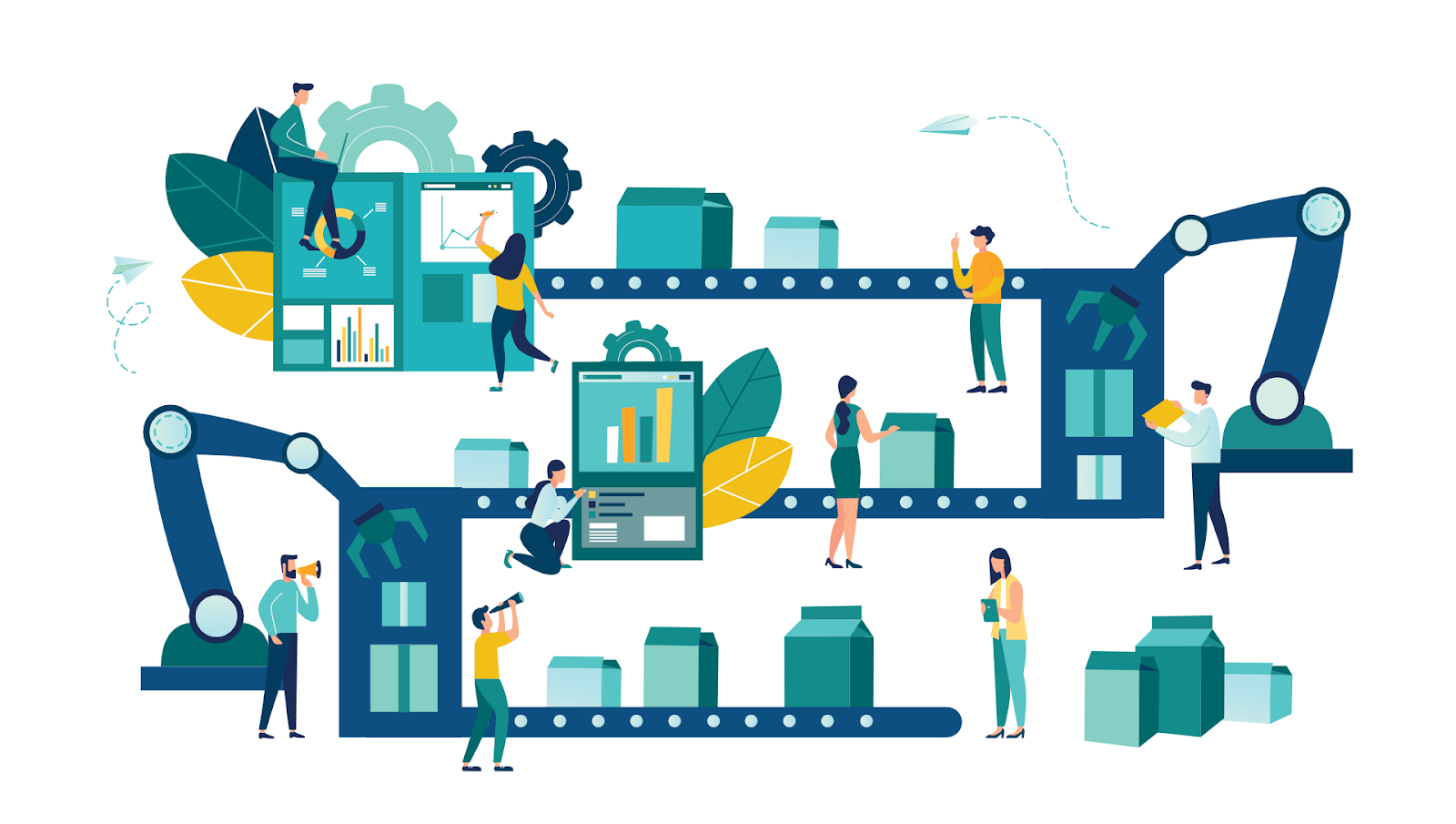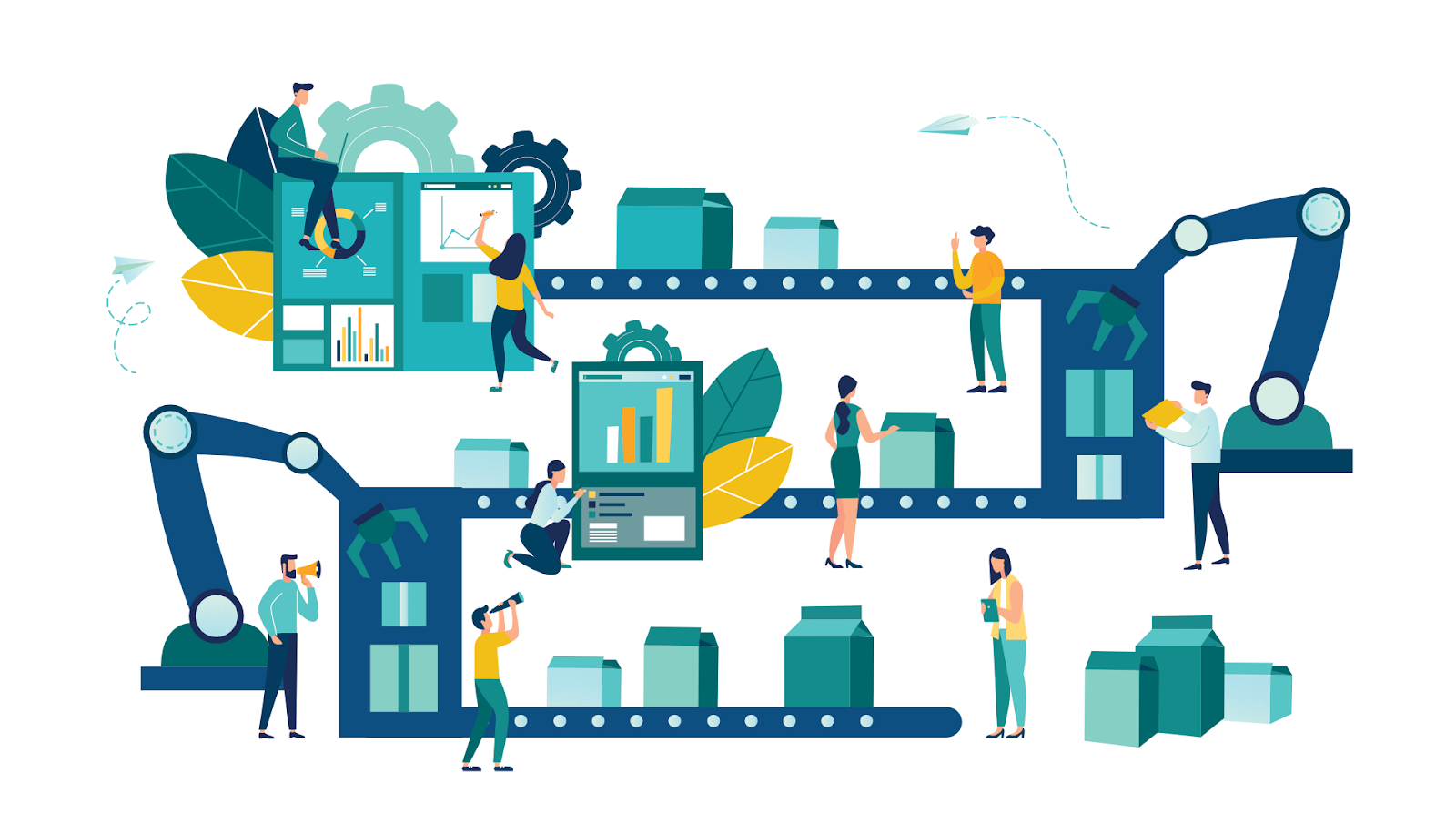
Industry 4.0 aims to optimise the operational efficiency and growth of factories through advanced technologies. It also aims to cope with new industrial challenges such as decarbonization. Beyond the automation aspect, managing the human factor helps limit risks. Here again, the use of digital technology is a must.
Industry 4.0 integrates technologies such as the Internet of Things (IoT), robotics, augmented reality, 3D printing and Artificial Intelligence (AI). Factories and workshops are nowadays equipped with multiple automations to facilitate the operators' tasks, reduce labor costs, while increasing productivity. Despite this increasing automation of production activities, the main challenge is to reduce human risk. To achieve this goal, digital technology is also a support for operators.
Start of activities at the workstations
When launching a production line, it is a question of organizing the workstations to rely on digital technology, while ensuring that the operators’ activities are replicated identically.
Digitising work instructions
In order to carry out his tasks correctly, the operator refers to the work instructions. The design department and/or production engineering are responsible for drafting these documents. The production management must ensure that the instructions are known to everyone, especially to newcomers.
Using a digital tool allows document management to be optimised by creating templates, copying and modifying instructions at the workstations and sharing them between different plants. Operators no longer spend time flipping through printed documents. Information is available in digital format. Critical points at different stages of the process are notified to the operator by automatic alerts for each workstation in the plant. To find their way around the factory, staff can rely on fully digitised interactive maps. Much more practical than a magnetic whiteboard where workshop plans are displayed!
Confirming training/position authorisations
Before starting the activity, the team leader ensures that each operator is fit for the job. The personnel must be competent, trained and empowered. The digital system can lock a process if the operator does not have the skills for the workstation. Multi-skill monitoring dashboards allow for the replacement of a missing operator at a moment's notice and for employees to permute from one workstation to another.
Using a digital tool will allow team leaders to get notification if there is need to renew training and authorisations. Just imagine if an accident occurs on a production line where the operator is not or no longer qualified! To carry out all the training, the production manager can count on the QHSE manager. The latter, who has teaching skills, will implement a training programme on the basis of materials that he has prepared in advance.
Checking the material before production launch
Preventive maintenance aims to reduce the costs related with expensive corrective maintenance, as well as a possible additional workload for the maintenance department. Well-maintained equipment ensures a quick start-up of activities while facilitating working conditions in the workshop (prevention of musculoskeletal disorders (MSDs), noise reduction, etc...). The operator must inventory and test the tools at his workstation before starting production. This check can be carried out using a digital tooling list.
Controls and overall monitoring during production
Throughout the manufacturing process, the production manager and the QHSE department must ensure that production quality is controlled.
Carrying out all controls
In combination with the work instructions, manufacturing checklists during production are indispensable. The purpose of these checklists, known as "Manufacturing Checklists", is to verify the compliance of the product during production to the predefined specifications and/or technical sheets. When we talk about product control, we are talking about quality checks about the product, including environmental and/or safety inspections, or even the monitoring of service providers.
Although the QHSE manager regularly goes to the field, he or she cannot carry out all of the controls activities alone. For example, some companies carry out hundreds of worksites in their factories each year. Carrying out HSE visits and monitoring external companies will quickly become a cumbersome activity. In these cases, the HSE manager does not even have the time to write half of the reports on these HSE visits... It is therefore necessary to rely on the operation managers and operators to fill in the records related to the various controls. They will fill in the essential data during production using a digital form. It can be very interesting to use certain technologies such as sensors/probes so that the data is collected automatically and continuously.
Managing non-conformities
In case of non-conformity on one of the critical parts of the production line, an automatic process locking system allows production to be stopped. The operation manager (or the operators themselves) report the cause of the breakdown, which will automatically alert the QHSE and/or maintenance department. When the non-conformities cannot be identified from the data entered, the staff can also take photos/videos. The QHSE Manager can also compile them in a defect library.
Data capitalisation and optimisation
With a view to long-term performance, the company analyses data from the field to continuously optimise and improve production activity.
Debriefing during daily meetings
The debriefing between two teams allows the transfer of handover. The point is to ensure that the predefined objectives between the two teams are achieved. What was done yesterday? What should be done today? What problems have been encountered? How can we cope with them? Recording these meetings allows the QHSE department to monitor progress and draw up an assessment with indicators.
Optimising the process through internal and verification audits
Internal audits are a regular feature of the verification methods used within factories. The digitised system is established by the QHSE department, in conjunction with the Production Manager and the other departments of the company, on the points of vigilance of the concerned process. Production, Maintenance, Purchasing, Logistics... all activities are reviewed before checking their compliance with the company's QHSE policy.
The frequency established for these controls may vary, and the list of control points must be regularly updated according to the findings observed during previous audits. Depending on the needs, auditors can easily create digitised grids to perform checks on certain topics in the workshops. The aim is to save them time by building easy-to-use drop-down menus. The planning and monitoring of audits are integrated into a dedicated solution that will generate alerts to the departments concerned.
The missions of the QHSE department and the Production department are thus closely linked. These two departments must ensure that they pool their skills to ensure the sustainability of the company's activities. Within the framework of Industry 4.0, the objective is to satisfy the requirements of customers/consumers by constantly focusing on innovation and the customisation of the products/services offered.
See more:
. . .


![Recommended for you [Industry 4.0] How to digitise your workstations in the factory of the future? - Free Download](https://hubspot-no-cache-eu1-prod.s3.amazonaws.com/cta/default/2302063/5720ea4c-9afe-48c2-96fb-6b5a046f46d1.png)



